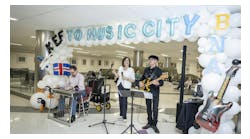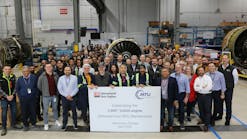It's not what everyone wants, but it's reasonable.
Venice and the federal government appear to have put together a plan for the municipal airport. Finally.
"This has been going on for six years, which is extraordinary to say the least," says Airport Administrator Chris Rozansky, who came on board during the final stages of negotiations.
Maybe the wait was worth it.
The Federal Aviation Administration is ready to invest nearly $20 million in improvements over the next five to seven years, and the agency has recognized most of the safety issues raised by Venice officials.
About $11.5 million of that budget addresses what was once a deal-breaker for the city: the placement of 26 homes within a Runway Protection Zone.
No one can see an RPZ. It's simply an imaginary trapezoid at the end of a runway designating the area a plane might need in an emergency situation.
The FAA would not allow homes or most buildings in this area if it were overseeing construction of a new runway or a new airport.
At older airports, however, where construction has butted against property lines for decades, RPZs often encompass residential neighborhoods.
The Venice case may be unusual because the city's 2000 airport layout plan showed a smaller RPZ -- one that did not include homes -- on its accompanying map.
That was a mistake, the FAA says. In fact, the written material supporting the 2000 map defined the RPZ as it is now recognized, Rozansky says. The proper dimensions just didn't make it to the map.
Now they're on it, which has elicited understandable alarm from the owners of the 26 homes. Though the designation does not affect safety one way or the other -- you're either living near the airport or you're not, no matter the terminology -- some owners worried that their property values would drop or that they would have trouble selling or insuring their homes.
City Council members championed their cause and persuaded the FAA to approve the addition of 750 feet to the south end of the runway, which would shrink the RPZ at the north so that it covered parts of only two private properties.
Former mayor Ed Martin and ex-council members Sue Lang and Ernie Zavodnyik caught flak for delaying the new airport plan, but their show of political willpower may end up protecting the integrity of a neighborhood in Venice.
The FAA deserves some credit, too. The agency would have been content to leave the RPZ as is. Agency reps vowed they had no intention of forcing the sale of homes.
This way, however, the RPZ will encompass almost exclusively unoccupied property, and the extended runway will have the added benefit of letting planes gain altitude quicker on southbound takeoffs, which will lessen the noise over South Venice.
The lone drawback lies in the time will take to get this done. Five to seven years seems a long wait.
Future city councils will have to stick with the plan and ensure that the FAA does the same.
Eric Ernst's column runs Wednesdays, Fridays and Sundays. Contact him at [email protected] or (941) 486-3073.





